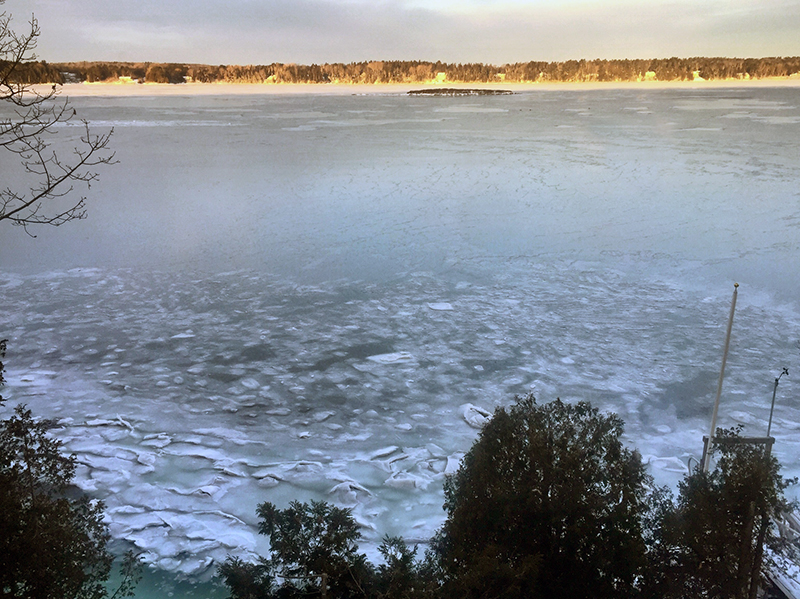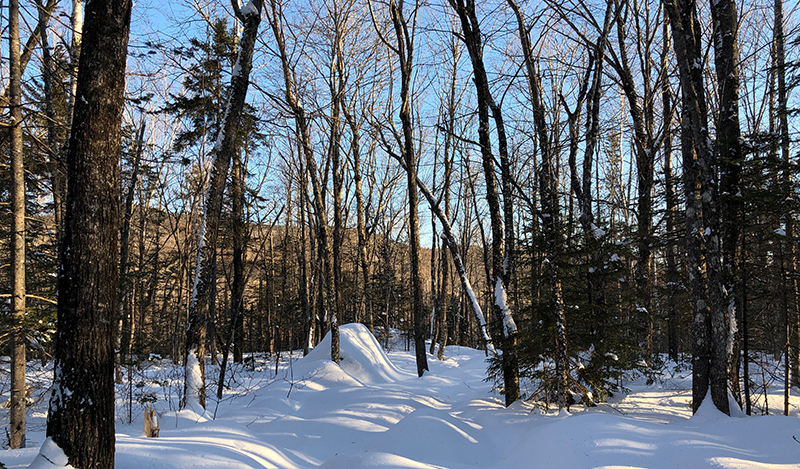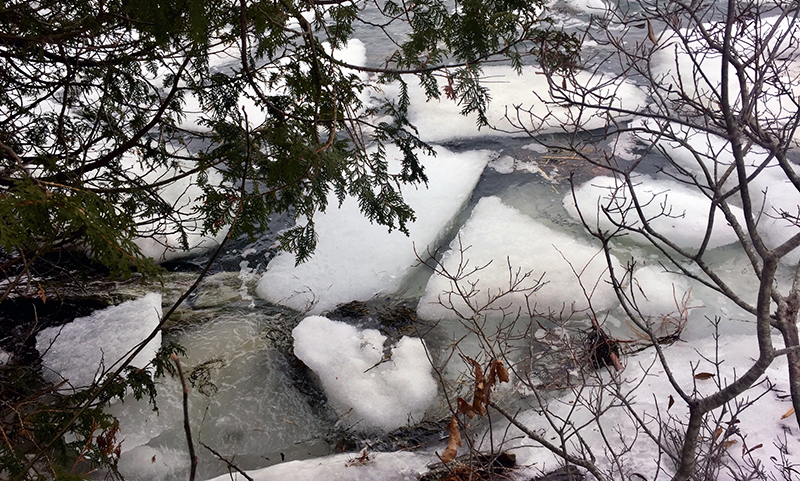This winter in Harpswell has me thinking about the ways that aquaculture is like viticulture. If you follow our posts you know that the French vignerons suffered the trials of Job in recent years — frost in some places, hail in others, or frost and hail for the particularly benighted. I am the holder of a Maine LPA (“limited purpose aquaculture” license) and the proud owner of two vintages of oysters (somewhere between four and five thousand, or as I like to think, more than 350 plates of half-shells). Our vignerons’ experiences make me wonder what nature might have in store for this rookie sea farmer.

Mainers think about their oysters in much the way the French think about their vineyards, with terroir at the heart of the matter. The place affects the flavor, producing oysters that are more briny or less so, fatter or leaner, depending on their location. Maine’s Côte d’Or is the Damariscotta estuary, where Maine’s best known oyster farms can be found and where the brackish and saltwater flows are particularly conducive to growing delicious oysters.
The waters off Maine are pristine but cold, which means oysters need three years to grow to the size you slurp in a restaurant. In temperate months, my oyster cages float a few football fields from my dock, just below the surface of Harpswell Sound and tethered in place by moorings and buoys. There they filter-feed on passing nutrients, soaking in the combination of food and salinity unique to the place and enhancing water quality in the bargain. For two Falls now, I have lowered my oyster cages to the floor of the Sound, wishing them a peaceful and healthy winter there.

Last winter was mild and easy — ice collected along the bank below our house as it always does, but the buoys floated free all winter. This year’s early and occasionally record lows extended the ice all the way across the Sound, locking in the buoys that both mark and tether my bottom-dwelling shellfish. My three moorings have no trouble keeping the cages in place during the summer, but I fretted about what might happen if a large ice floe locked around my buoys got a hankering to visit Portland. My mind was not eased when I saw ice drag four of a neighbor’s still-floating oyster cages and their mooring about 200 yards up the Sound and into my view.

So far, so good. The January thaw was intense and came with a few inches of rain, so the combination broke up all the ice over just a few days. My buoys shrugged off their captors, and as far as I can see remain exactly where they were last fall. But then half the winter lies ahead.
Our vignerons mostly met their disasters with a wistful smile, some repeating the old saw that a prudent producer needs to have three vintages: one in the vines, one in the cellar, and a third in the bank. Both of our oyster vintages are in the mud, not the bank or the cellar, but we plan to adopt a positive attitude anyway.
MW

